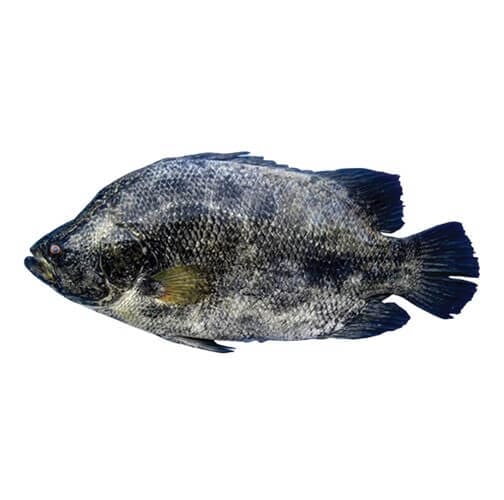

The Tripletail-(Dai), A weirdly wonderful eating fish is not known to many. One of the rare fish of the Arabian Sea, Tripletail is a highly sought-after fish at the Karachi Fish Harbor for its distinctive amazing taste and mouthfeel.
Note: All our prices are based on the pre-cutting weight of the seafood. The net weight will be dependent on the type of cleaning you choose.
Introduction
The Tripletail-(Dai), A weirdly wonderful eating fish is not known to many. One of the rare fish of the Arabian Sea, Tripletail is a highly sought-after fish at the Karachi Fish Harbor for its distinctive amazing taste and mouthfeel.
The name tripletail-(Dai) comes from the fact that the large and rounded soft dorsal fin and anal fin extend far back on the body and closely resemble the tail in color and shape so that the fish might appear to have three tails.
The most characteristic and certainly one of the most unusual behaviors exhibited by Tripletail fish is the propensity to lie just below the surface, floating with one side exposed, looking for all intents, dead.
Flavor Profile
So what does Tripletail fish taste like? The short answer is that Tripletail fish taste similar to much other white meat fish. The Tripletail is typically a flatfish with decent fillets. The meat is firm, and the taste is similar to fish like the Red Snapper or the Hamour.
Colour
Adult Tripletail has drab, spotted, and mottled color patterns, in various shades of black, brown, and gray. Juveniles are mottled with yellow, brown, and black. Juveniles have white pectoral fins and a white margin on the tail.
Size
On average, Tripletail size range is 1 kg to 5 kg per fish. However, other sizes are also occasionally available.
Physical Attributes
The Tripletail has distinctively large and rounded soft dorsal, caudal, and anal fins. This characteristic gave rise to the common name. Lying on its side at the water surface, a young tripletail looks like a floating mangrove leaf.
Cutting Preferences
The Tripletail is preferred for slices and boneless meat.
Approx. Cutting Yields
Health Benefits